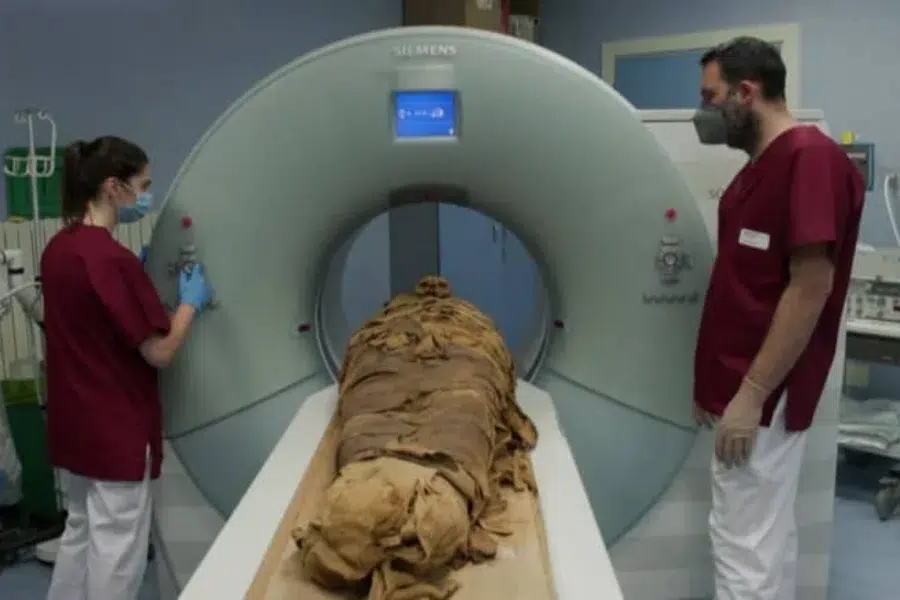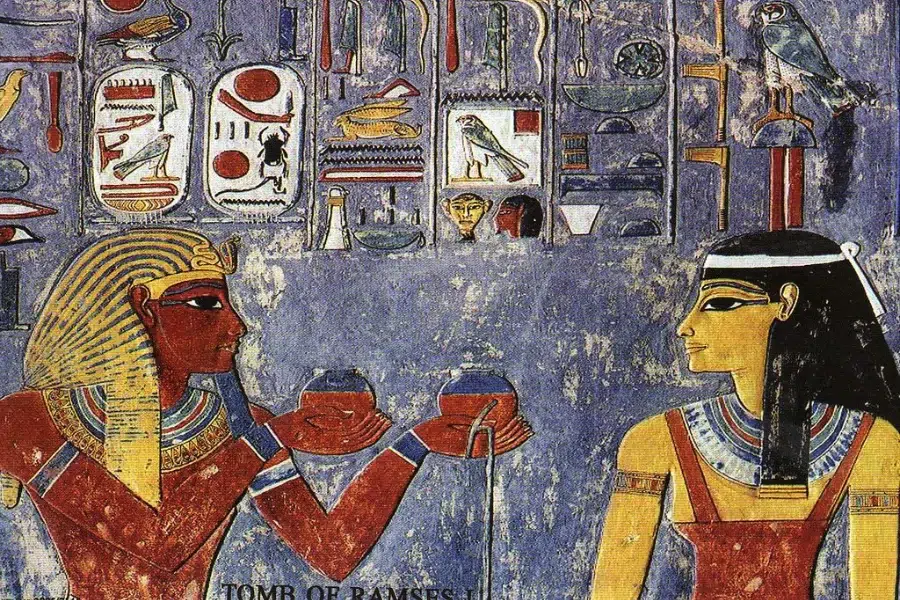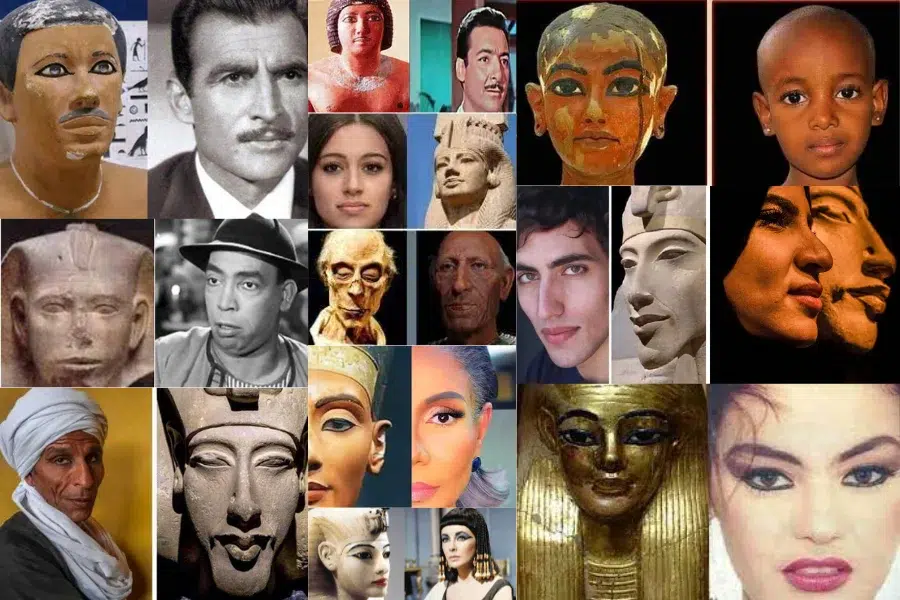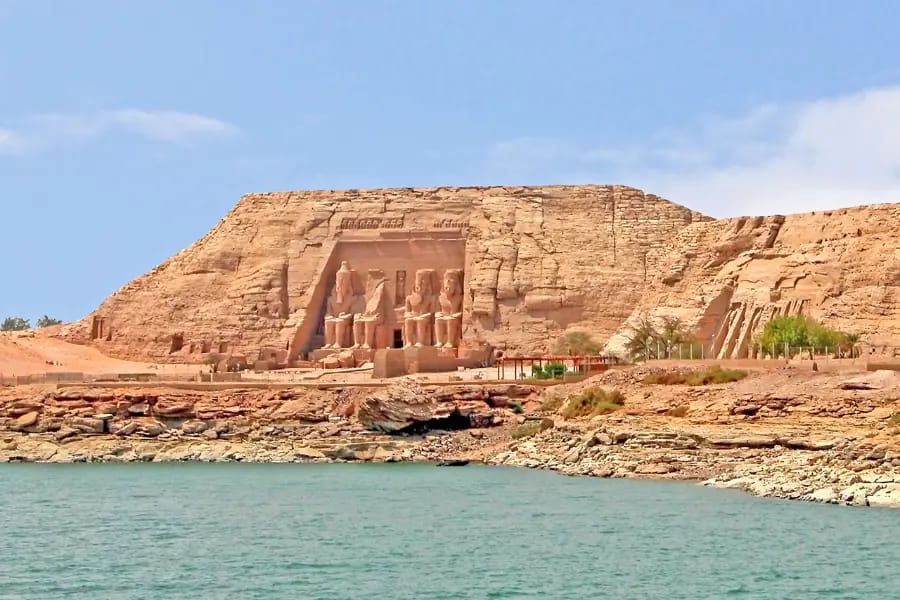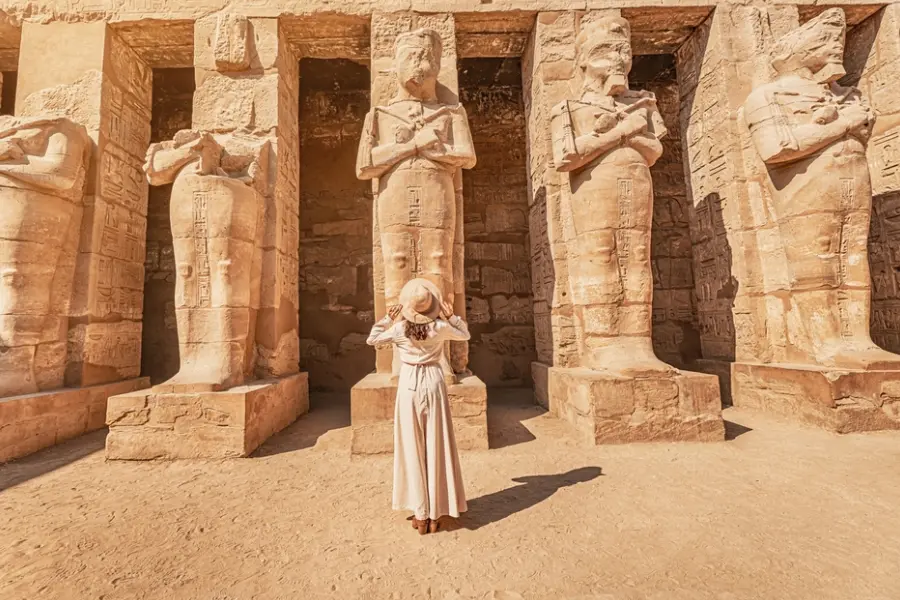What Is the Race of an Egyptian? Ancient Roots & Modern Views
The question “What is the race of an Egyptian?” has intrigued scholars, travelers, and history enthusiasts for centuries. Ancient Egypt’s location at the crossroads of Africa, the Middle East, and the Mediterranean made it a melting pot of cultures and genetics. But can we define one single “Egyptian race”? This article explores the myths, scientific debates, and modern DNA studies to shed light on this complex issue.
From Pharaonic art and ancient myths to genetic research on mummies, we’ll examine the evidence and answer key questions about the origins and ethnicity of the Egyptians—ancient and modern.
Key Takeaways
- ✅ The term “race” is a modern construct; ancient Egyptians saw themselves as part of a divine & cultural lineage.
- ✅ Archaeological and artistic evidence shows diversity influenced by Africa, the Levant, and the Mediterranean.
- ✅ DNA tests on mummies suggest stronger genetic links to the Near East & Europe than to sub-Saharan Africa.
- ✅ Modern Egyptians descend from the ancient population, enriched by centuries of migration and exchange.
- ✅ Egypt’s history reflects continuity and diversity rather than a single racial identity.
Egyptian Race: Insights from Ancient Beliefs
Long before modern science, the ancient Egyptians explained their own origins through religion and mythology. According to their beliefs, the god Ra (the Sun God) created humanity, including the first inhabitants of Egypt. This mythological framework shaped how Egyptians viewed their place in the world and their sense of identity.
However, beyond myths, early historians and archaeologists attempted to trace the ethnic origins of Egyptians. Hieroglyphic inscriptions suggested ties with the mysterious land of Punt—thought to be located somewhere between the Horn of Africa and the Arabian Peninsula. Egyptian texts describe Punt as the “Land of the Gods,” a place of trade and cultural exchange.
This idea points to an ancient African origin along the Nile Valley, later influenced by invaders and settlers from the north and east. Over time, the merging of local African communities with newcomers helped shape what became one of the world’s most advanced civilizations: Pharaonic Egypt.
How Did the Debate About the Egyptian Race Begin?
The question “What race were the ancient Egyptians?” became a heated debate during the 19th and 20th centuries. European scholars, influenced by colonial ideologies, often tried to claim Egypt’s civilization as part of a “Mediterranean” or even “Caucasian” heritage, separating it from Africa. Meanwhile, Afrocentric historians argued the opposite—that ancient Egyptians were predominantly Black Africans.
Both perspectives were shaped by politics and identity rather than science. Paintings and wall reliefs from temples show Egyptians with varying skin tones—reddish-brown for men, lighter shades for women, and darker tones for Nubians—indicating diversity rather than a single racial category.
Modern historians emphasize that ancient Egypt was a crossroads. Its culture was African at its core, but centuries of interaction with the Levant, Nubia, and the Mediterranean world meant Egyptians cannot be boxed into one modern racial category. The debate itself reflects how “race” is a social construct applied retroactively.
Ancient Egyptian DNA Studies
The most groundbreaking insights into the Egyptian race come from modern genetic research. In 2017, scientists analyzed the DNA of mummies from the famous site of Abusir el-Meleq in Middle Egypt, covering a period from 1400 BC to AD 400. The results were surprising to many.
The genetic profiles showed that ancient Egyptians were more closely related to populations of the Near East and the eastern Mediterranean than to today’s Egyptians. Modern Egyptians, by contrast, have a higher percentage of sub-Saharan African ancestry, likely introduced in the last 2,000 years through trade, migration, and the trans-Saharan slave routes.
This doesn’t mean Egypt wasn’t African. Rather, it reflects how connected the Nile Valley was to multiple regions. Egypt’s position as a hub between Africa, the Middle East, and Europe shaped its people’s genetic diversity across millennia.
In short, DNA evidence confirms what archaeology and history suggest: Egypt’s population was never homogenous. It was a mosaic shaped by migration, mixing, and cultural exchange.
Skin Tone and Appearance of Ancient Egyptians
One of the most debated aspects of Egyptian race is skin color. Ancient tomb paintings and temple reliefs depict Egyptians with a variety of shades—from reddish-brown for men to lighter tones for women, and darker hues for Nubians to the south. This artistic tradition reflected symbolism and social roles rather than strict biological differences.
For example, men were often painted with darker tones to indicate outdoor labor, while women were shown with lighter skin to symbolize indoor life and ideals of beauty. These artistic conventions show that color was not a racial marker in ancient Egyptian society.
In terms of physical features, mummies and statues reveal a mixture of traits—Mediterranean, African, and Near Eastern. Ancient Egyptians saw themselves simply as “Egyptians,” not divided by race in the modern sense.
Thus, when we ask “What did ancient Egyptians look like?”, the answer is: diverse. Their skin tones and features reflected Egypt’s unique position at the crossroads of Africa and the Middle East.
Modern Egyptians vs Ancient Egyptians
Another common question is whether modern Egyptians are genetically and culturally the same as their ancient ancestors. The short answer: Egyptians today carry the legacy of their past, but thousands of years of migration and mixing have introduced new elements into their identity.
Genetic studies show that modern Egyptians share continuity with ancient populations of the Nile Valley, but they also have higher proportions of sub-Saharan African DNA, as well as contributions from Arabs, Greeks, Romans, and Ottomans. This reflects Egypt’s role as a hub for trade, conquest, and cultural exchange over millennia.
Culturally, Egyptians have preserved many traditions from antiquity—festivals, food, and Nile-centered lifestyles—while embracing influences from the Islamic and Mediterranean worlds. This blend makes modern Egypt a living mosaic of its layered history.
In essence, modern Egyptians are direct descendants of the ancient population, with their heritage enriched by centuries of migration and cultural exchange. This continuity explains why scholars view Egypt’s identity as both ancient and evolving.
Scholarly Consensus Today
Most historians and anthropologists today agree that asking “What is the race of an Egyptian?” oversimplifies reality. Race is a modern social concept, not an ancient category. Ancient Egyptians identified themselves primarily by culture, language, and geography—not by skin color or racial labels.
The scholarly consensus is that Egypt was always ethnically diverse, shaped by its position as a crossroads between Africa, the Mediterranean, and the Near East. Instead of focusing on race, modern research emphasizes ancestry, cultural exchange, and genetic diversity as the best ways to understand Egypt’s population.
Impact on Modern Discussions
The debate about the Egyptian race continues to influence politics, education, and identity today. Some Afrocentric perspectives emphasize Egypt’s African heritage, while others highlight connections to the Mediterranean and Middle East. Both sides reflect modern concerns more than ancient realities.
For Egyptians themselves, the focus is less on race and more on national pride and cultural heritage. Ancient Egypt’s legacy belongs to all Egyptians, regardless of external debates, and is recognized worldwide as one of humanity’s most influential civilizations.
Conclusion
So, what is the race of an Egyptian? The answer is complex. Ancient Egyptians were not a single race but a diverse population shaped by their geography at the crossroads of Africa and the Near East. They saw themselves as Egyptians first and foremost, not divided by racial categories.
Modern Egyptians are direct descendants of their ancient ancestors, enriched by centuries of migration, trade, and cultural exchange. Both ancient and modern Egypt reflect continuity, diversity, and resilience.
In short: Ancient Egypt’s story is not about fitting into modern racial boxes, but about a civilization that thrived on diversity and left an enduring legacy for all humanity.
✨ Ready to experience Egypt beyond the pages of history?
Come and walk in the footsteps of the pharaohs, explore Cairo’s pyramids, and sail the Nile on a luxury Nile cruise through Luxor and Aswan. Discover ancient temples, vibrant culture, and timeless heritage with our tailored Egypt tour packages. Book your journey today and unlock the adventure of a lifetime!
FAQ
What is the race of an Egyptian?
Egyptians are not defined by a single race. Ancient Egyptians were a diverse population shaped by both African and Near Eastern ancestry, and today Egyptians remain a mix of African, Arab, and Mediterranean heritage.
Were ancient Egyptians black or white?
Ancient Egyptians cannot be classified as strictly black or white. Tomb art shows a variety of skin tones, and genetic studies reveal a mix of African and Near Eastern ancestry. They identified as Egyptians rather than by modern racial categories.
What did ancient Egyptians look like?
Ancient Egyptians displayed a range of features—medium to dark skin, with traits influenced by Africa, the Mediterranean, and the Near East. Their appearance reflected Egypt’s position as a cultural crossroads.
Are modern Egyptians the same as ancient Egyptians?
Yes, modern Egyptians are the direct descendants of the ancient population, but with additional genetic influence from Arabs, Greeks, Romans, and others due to centuries of migration and trade.
What does DNA research reveal about ancient Egyptians?
DNA analysis of mummies shows that ancient Egyptians were genetically closer to Near Eastern and Mediterranean populations, while modern Egyptians have more sub-Saharan African ancestry due to recent migrations.
Why is the race of Egyptians a controversial topic?
The debate is fueled by modern politics and identity movements. While some Afrocentric and Eurocentric theories claimed ownership of Egypt’s past, scholars today agree the civilization was diverse and uniquely Egyptian.




